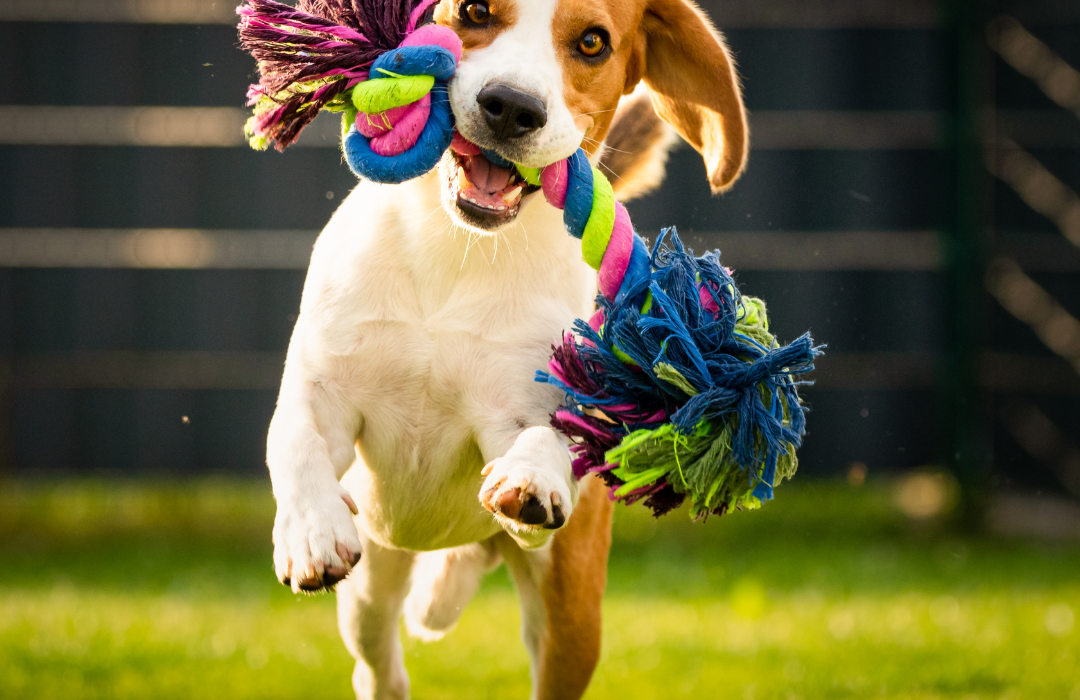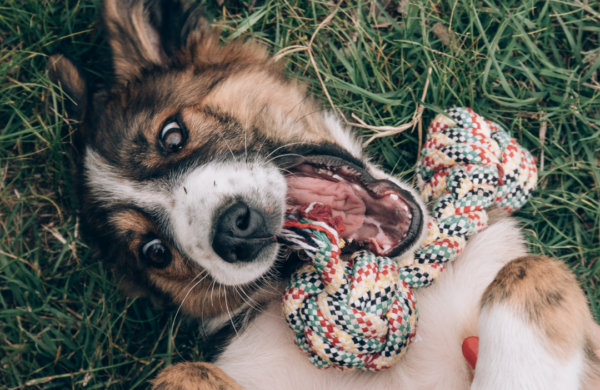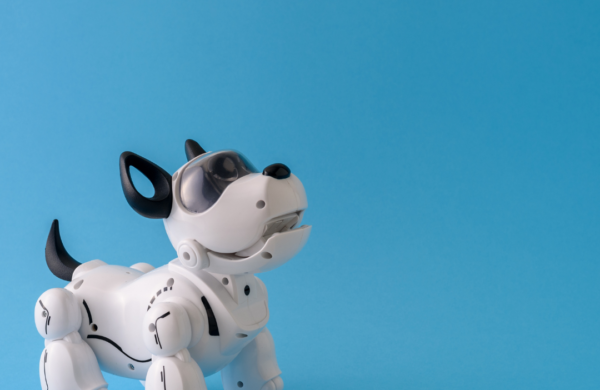At Dog Days, one of the most common behavioural challenges we encounter is possessiveness among dogs. Possessive behaviours typically revolve around resources like food, toys, or even human attention. When a dog becomes overly protective or territorial about these items, it can lead to competition, tension, and in some cases, reactive behaviorus towards other dogs. While we work hard to manage these behaviours in the daycare environment, the most effective solutions involve collaboration with owners. In this post, we’ll explain why these behaviours arise, how they can affect the daycare dynamic, and what you, as an owner, can do at home to help your dog overcome these tendencies.
What Is Possessive Behaviour?
Possessive behaviour, also known as resource guarding, occurs when a dog feels the need to protect something they deem valuable—be it a toy, food, or even space near a caregiver. This behaviour is rooted in the dog’s instinct to secure necessary resources for survival. In the wild, protecting food or a prized possession makes sense, but in a modern setting like doggy daycare, it can lead to problems, especially when multiple dogs are involved.
Dogs that display possessive behaviours might growl, snap, or even lunge when another dog (or even a person) approaches the object or resource they’re guarding. This can create an unstable atmosphere in the daycare environment, as other dogs may become anxious or reactive in response. A normally peaceful group can quickly become unsettled if one dog begins to display possessive tendencies.
The Impact of Resource Guarding in Doggy Daycare
Resource Guarding can significantly disrupt the positive atmosphere we strive to maintain at our daycare. When a dog becomes reactive over food, toys, or attention, it can lead to fights or stress among the other dogs. A dog that continually guards a toy, for example, might cause other dogs to avoid play, leading to an imbalance in the group’s dynamics. Even if possessive behaviours don’t escalate to physical aggression, the constant tension they create can result in a more anxious environment, affecting the overall happiness and well-being of all the dogs in our care.
How Owners Can Help: Homework for Reducing Possessive Behaviours
Addressing possessive behaviours starts at home, and there are several strategies owners can implement to help reduce these tendencies. Here’s how you can assist in your dog’s behavioural development and make their daycare experience more enjoyable for everyone.
1. Identifying the Triggers
The first step in addressing resource guarding is identifying what triggers them. Observe your dog at home to see if there are specific items or situations that cause them to become protective or reactive. Do they growl when someone approaches their food bowl? Are they reluctant to share toys with other dogs? Once you’ve identified the triggers, you can begin working on these specific issues.
2. Desensitisation and Positive Reinforcement
One of the most effective methods for reducing possessive behaviour is through desensitisation and positive reinforcement. Start by gradually exposing your dog to the triggers in a controlled environment. For example, if your dog is possessive over toys, begin by holding the toy and rewarding your dog with a treat when they calmly give it up or show no signs of aggression. This helps to teach them that giving up the toy is a positive experience and that they don’t need to guard it.
You can also practice resource trading, where you ask your dog to give up a toy or food in exchange for something even more desirable, such as a high-value treat. This teaches them that relinquishing the item results in a reward, reducing their desire to guard it.
3. Practice Sharing at Home
Practicing sharing at home can also help prepare your dog for group settings like daycare. Arrange controlled playdates with other dogs where your dog will have to share toys or engage in cooperative activities. Monitor the interactions closely and intervene if any possessiveness arises. Encourage positive behaviour by praising your dog when they play nicely and calmly share with others.
4. Teach Commands Like “Leave It” and “Drop It”
Basic commands like “leave it” and “drop it” are crucial in managing possessive behaviours. These commands empower you to take control of a situation before it escalates. Practice these commands daily, both in low-stress situations and when your dog is engaging with a high-value item. Reinforce compliance with praise and rewards to ensure they respond positively.
5. Consistency and Patience
Consistency is key when addressing possessiveness. Ensure that everyone in your household follows the same rules and training methods to prevent confusion for your dog. Be patient—changing behaviours takes time and consistent effort. Don’t expect overnight results, but with steady progress, you’ll notice your dog becoming more relaxed and willing to share resources.
How We Manage Possessiveness at Daycare
At daycare, we handle possessive behaviours by carefully managing the environment and interactions. We remove high-value items like food bowls or certain toys that could trigger possessive tendencies. Structured play sessions are introduced, ensuring that dogs have ample space to interact without feeling the need to guard anything.
We also work with dogs individually, using positive reinforcement to encourage calm behaviour when they’re around other dogs. If a dog shows signs of possessiveness, we take immediate action to redirect their behaviour in a positive and non-confrontational way. Our staff is trained to read the dogs’ body language, so we can intervene before situations escalate.
However, the most significant progress comes when owners and daycare staff work together. When you implement the training methods we’ve discussed at home, you’re reinforcing good habits that your dog can carry into the daycare environment. This collaboration ensures that your dog is less likely to become reactive or possessive during their time with us.
Possessive behaviorus can create challenges in doggy daycare, but with a proactive approach at home and support from our daycare team, these behaviours can be mitigated. By identifying triggers, practicing desensitisation, and consistently reinforcing positive behaviours, you can help your dog become more relaxed and confident in shared environments. Together, we can ensure that every dog at daycare enjoys a safe, happy, and balanced experience. In an aid to help the process, we recommend working with a behaviourist who can guide you through these challenges and accelerate the results.



